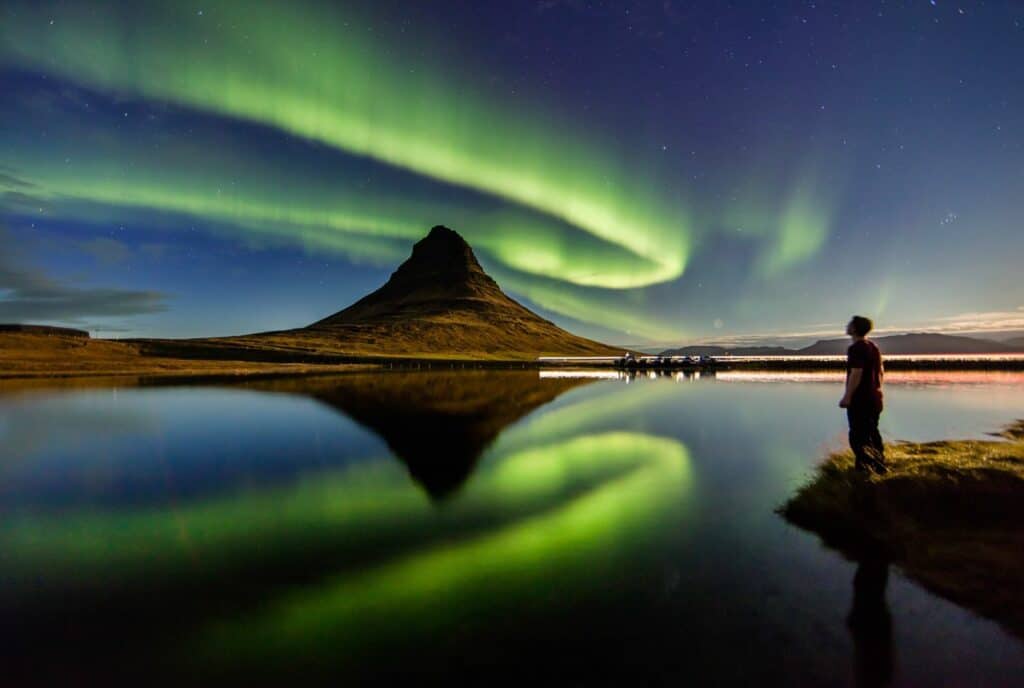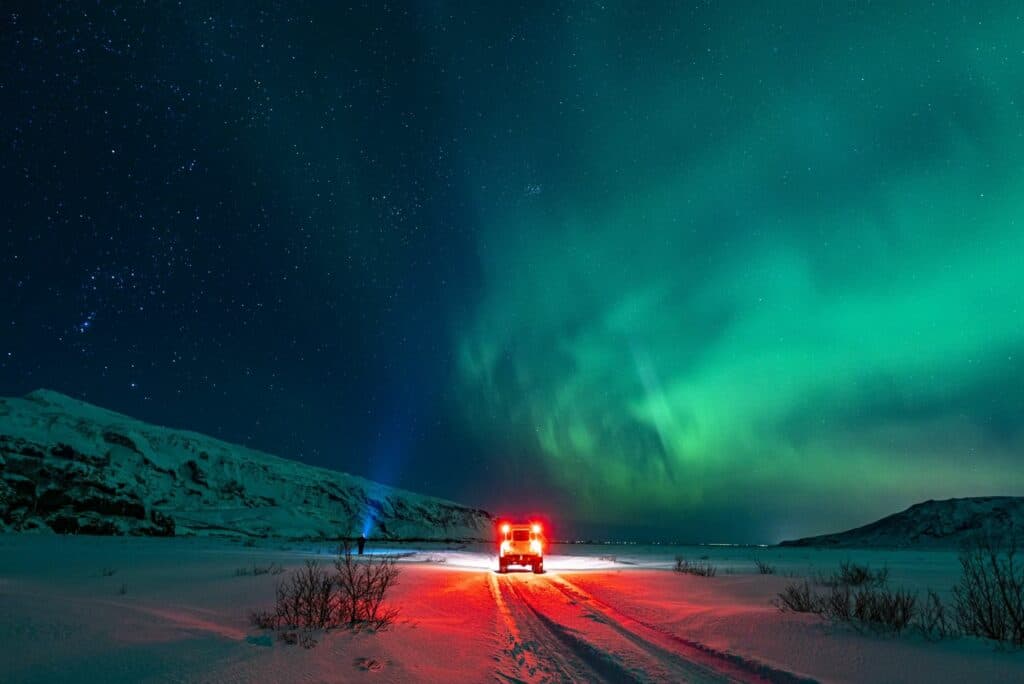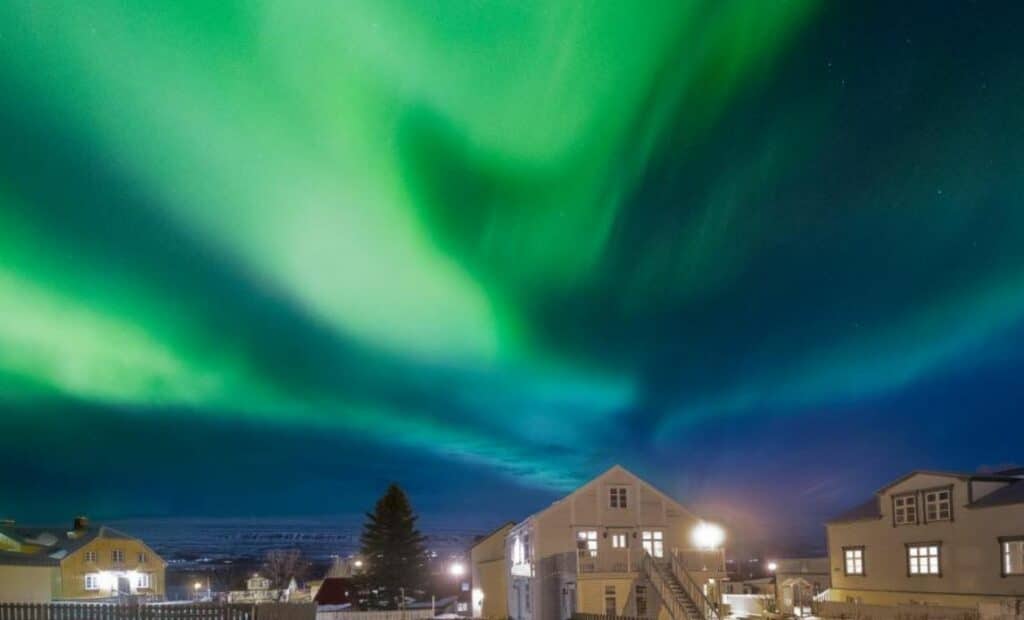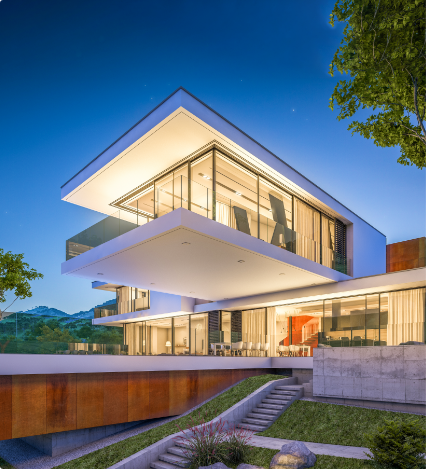From the best times and viewing spots to practical tips, you’ll find everything you need for an awe-inspiring aurora experience!

Iceland’s Captivating Cosmic Curtains
It’s no wonder that Iceland is on many travelers’ bucket lists. When it comes to natural wonders, The Land of Fire and Ice easily takes the cake. But out of all the mesmerizing landscapes and vistas, one truly stands out: the aurora borealis. Hunting the Northern Lights in Iceland is an incredibly enthralling pursuit, given that one has to consider the best time and place to see them!
The fact that they’re so elusive and require a lot of patience also adds to their appeal. In fact, the sporadic nature of the Northern Lights makes it a sign of luck and good fortune in many Northern cultures. Some even believe babies born during a Northern Lights show will grow up intelligent, good-looking, and wealthy!
With this guide, luck will be on your side! We’ve put together a quick rundown of the best places and ideal times to spot Iceland’s Northern Lights. While this doesn’t guarantee you’ll see them 100%, it definitely increases your chances! So pack your warmest coat and a good camera because we are chasing the cosmic curtains of the north!
Best Time to Catch Iceland’s Northern Lights
In order to maximize your chances of witnessing the dazzling aurora borealis, it’s crucial to understand when to see the Northern Lights in Iceland.
This section will provide information on the ideal season and conditions for a memorable light show.
Season
The prime time for Northern Lights sightings in Iceland is during the winter months, from late September to early April. The nights are long, and the skies are dark enough to create the perfect backdrop for the aurora’s vibrant hues.

Weather
Clear skies are essential for optimal viewing of the northern lights. Keep an eye on the weather forecast and be prepared to change your plans if necessary, as cloud cover can obstruct the view.
Solar Activity
Solar activity influences the Aurora Borealis’ intensity. Track the aurora forecast from the Icelandic Meteorological Office website to predict the strength of the aurora during your visit.
Moon Phase
Some sources argue that a full moon does not lessen the intensity of the Northern Lights in Iceland. However, the full moon is still a bright source of light. We wouldn’t consider our Earth’s natural satellite a light pollutant any other day. Still, when it comes to Northern Lights hunting, it is in our best interest to do so! To ensure nothing gets in the way of your aurora borealis experience, time your visit so that you arrive a full week before the new moon!
Where to Watch Iceland’s Northern Lights
Apart from considering the best time to see the Northern Lights in Iceland, you’ll also need to consider where you can see them.
Here are the top places where Northern Lights are very likely to be sighted:
Reykjavik
Although the city lights can hinder the view, there are still some great spots within Reykjavik where the aurora can be seen, such as Grotta Lighthouse, Perlan, and Öskjuhlíð Hill.
Golden Circle
This popular tourist route is an excellent option for Northern Lights sightings, with Thingvellir National Park and Geysir Hot Springs Area being two prime locations.
We highly recommend going on a Golden Circle road trip if you’re in Iceland to see the aurora borealis because you can get to rent your own vehicle. This means you can set out at your own leisure and at your own pace! With you behind the wheel, you can take complete control of your itinerary and head for the Nothern Lights viewing locations.
South Coast
The picturesque South Coast offers several stunning locations to watch the aurora, including Jokulsarlon Glacier Lagoon, Diamond Beach, and Reynisfjara Black Sand Beach. If you’re a sucker for ocean views, the South Coast is an excellent option for viewing the Northern Lights dancing high above the waters.

Tips for Observing Iceland’s Northern Lights
Apart from knowing where and when to see Iceland’s Northern Lights, here are more tips to ensure you get the absolute most out of your trip:
Dress Warmly
Iceland’s winter temperatures can be harsh, so bundle up in layers and wear a warm hat, gloves, and sturdy boots. Keeping warm and comfortable during your aurora hunt ensures that nothing — not even the freezing cold — spoils this once-in-a-lifetime experience.
Bring A Good Camera
If the aurora is intense enough, you can see a wide range of colors. However, when it is weak, it’s easy to confuse it with wispy night clouds. The best way to detect the full range of color present is to capture it with your camera. You can use a DSLR or your own phone camera (which has to have wide to ultra-wide angle capabilities). If you’re using your phone, you may also install specialized Northern Lights photography apps instead of relying on your built-in camera.
Bring A Tripod
To capture the best photos of the northern lights, a tripod is essential to stabilize your camera and allow longer exposure times. Plus, you can just set your camera down, live in the present, and enjoy the moment with loved ones!
Be Patient
The aurora borealis can be unpredictable, so be prepared to wait and keep an open mind. The experience of witnessing this celestial phenomenon is well worth the effort! Get tons of rest before nighttime, stay hydrated, or enjoy a hot tub or hot spring dip while waiting.
Where to Stay to See Iceland’s Northern Lights
Now that you know where and when to see the Northern Lights in Iceland, it’s time to find out where you can set up camp. Ideally, you should stay somewhere near the Northern Lights viewing points.
Consider these locations when booking your accommodation:
- REYKJAVIK: The capital city is home to numerous restaurants, cafes, and shops. If you’re planning to stay in this city, be sure to visit the iconic Hallgrímskirkja church and Harpa Concert Hall. Some of the popular restaurants that you should try are Grillmarkaðurinn and Sjávargrillið.
- SELFÓSS: Near the Golden Circle, Selfoss offers a range of eateries, such as Tryggvaskáli Restaurant and Kaffi Krús. The town is also close to the Kerið Crater, a must-see geological wonder.
- HVOLSVÖLLUR: This small town near the South Coast features cozy accommodations and a few local dining options like Gamla Fjósið. It’s also an excellent base for exploring the Seljalandsfoss and Skógafoss waterfalls.
- VÍK: As a gateway to Reynisfjara Black Sand Beach, Vík offers visitors a chance to experience the northern lights against a stunning coastal backdrop. Check out Sudur-Vík Restaurant for a bite to eat and explore the nearby Dyrhólaey Peninsula.
- HÖFN: Situated near Jokulsarlon Glacier Lagoon, Höfn boasts a variety of local seafood restaurants like Pakkhús. It’s also a convenient base for exploring Vatnajökull National Park and the nearby Diamond Beach.
- AKUREYRI: Known as the “Capital of North Iceland,” Akureyri offers numerous attractions, including the Akureyri Botanical Garden and the Akureyri Church. If you’re planning to set up camp here, enjoy dining at Rub 23 or Strikið, and don’t miss the opportunity to visit the nearby Goðafoss waterfall.

Seek Out The Symphony of Lights in Iceland
Iceland’s aurora borealis is a celestial experience like no other, and with the right timing, location, and preparation, witnessing this symphony of lights can become the highlight of your journey. Take the chance to see the Northern Lights in Iceland by planning your trip around the best time and places for viewing.
To make the most of your adventure, choose personalized accommodations that cater to your needs and preferences with the help of Rent By Owner! Our all-in-one portal helps you plan itineraries and find and compare vacation rentals. Embrace the magic of the northern lights and create memories that will last a lifetime!
TLDR
The best time to see the Northern Lights in Iceland is during the winter months, from late September to early April. Prime locations for viewing include Reykjavik, the Golden Circle, and the South Coast. For your trip, consider staying in nearby cities or towns such as Selfoss, Hvolsvöllur, Vík, Höfn, and Akureyri, which offer various attractions, dining options, and facilities. Of course, don’t forget to dress warmly, bring a good camera or install specialized photography apps, pack a tripod, and be patient during your aurora hunt. Find the perfect vacation rental with Rent By Owner to ensure a comfortable and memorable experience in Iceland.













